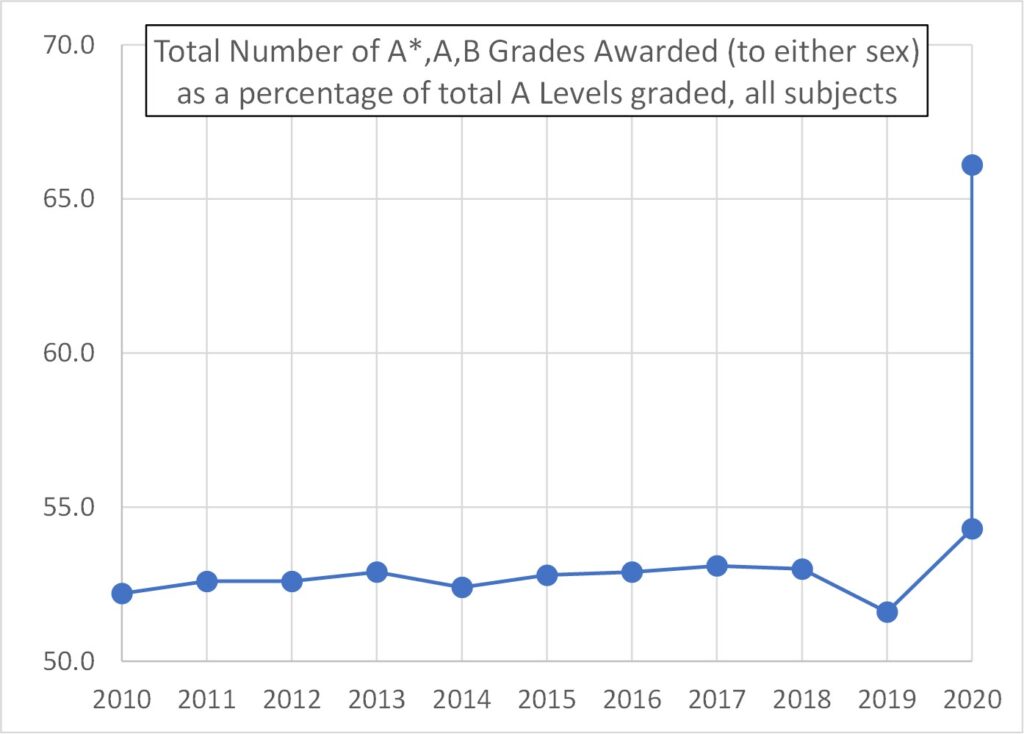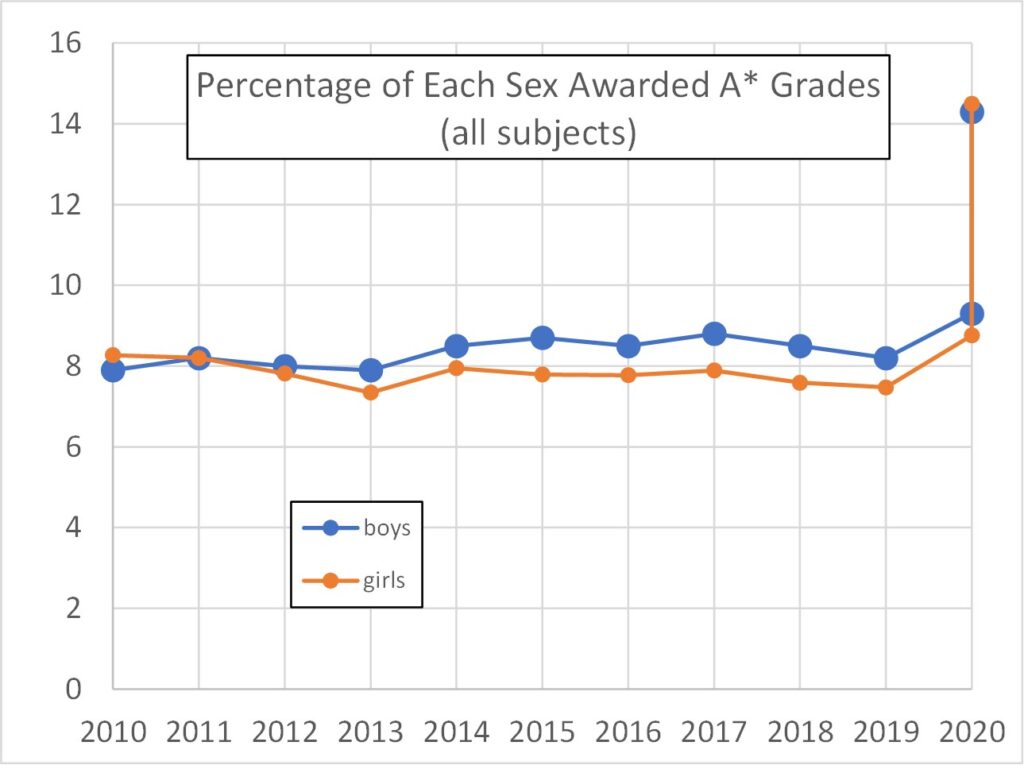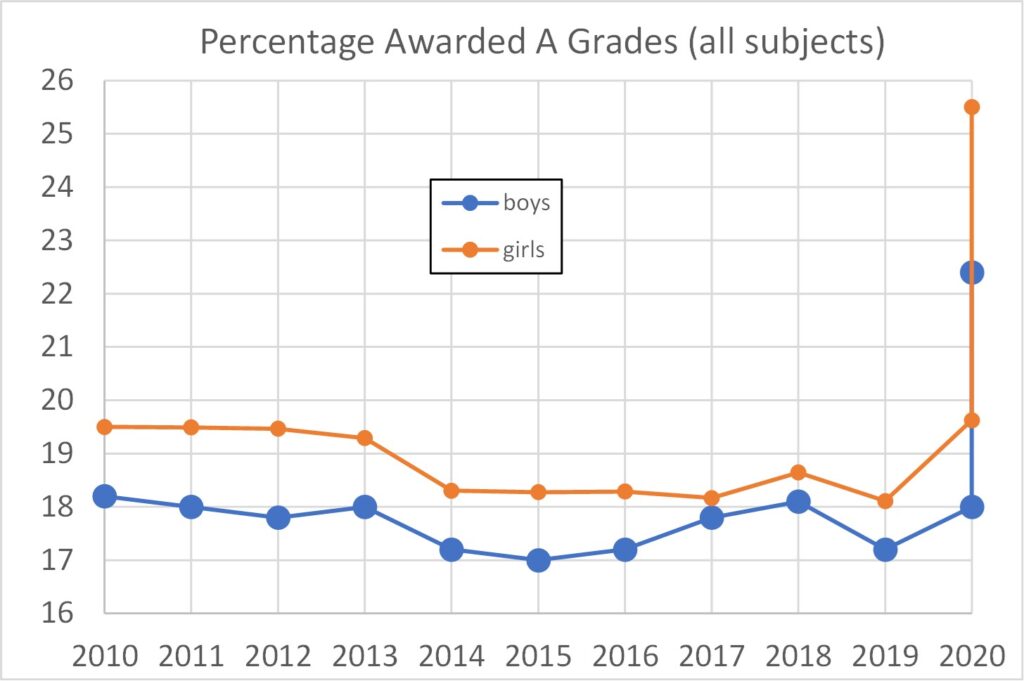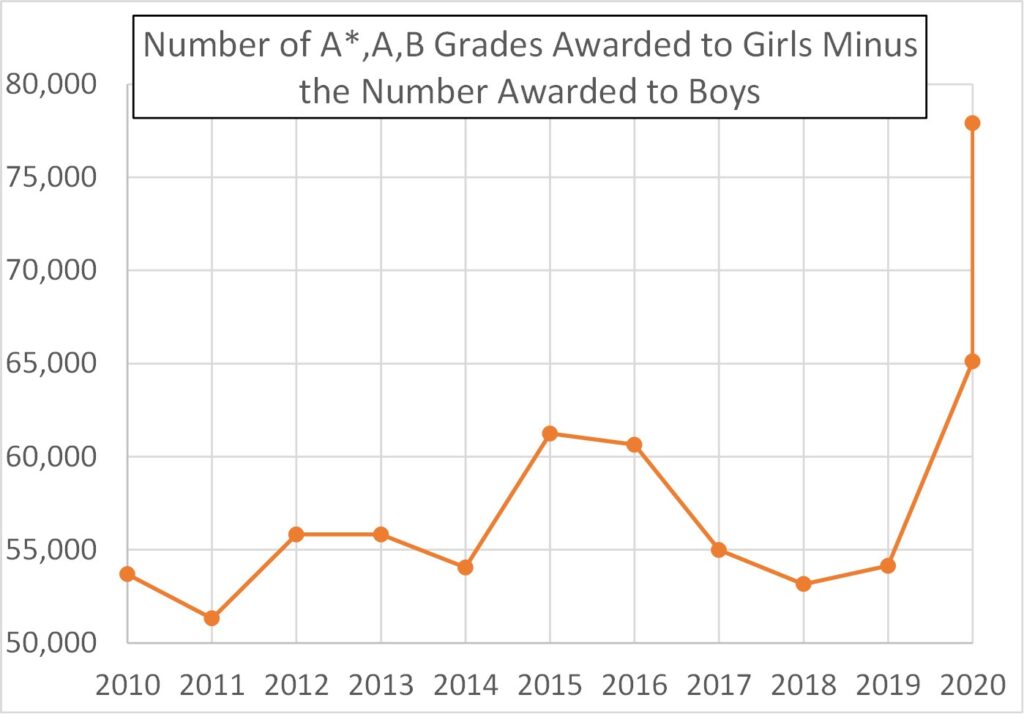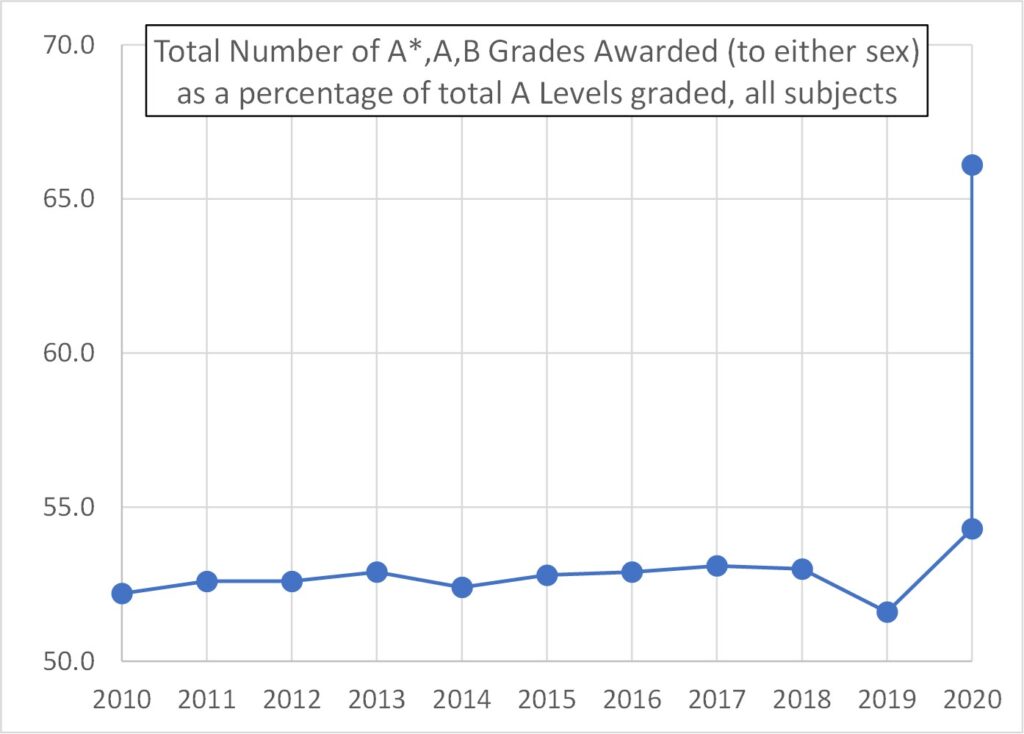
Have you forgotten the great 2020 A Level debacle now? You are meant to have done. They’ll be hoping it attracts no more attention, and with good reason, as we will see.
You will recall that the Government thought it a good idea to award A Level grades without the candidates taking the exams. A child of ten could have anticipated the uproar of dissatisfaction which would result. Ofqual chief regulator, Sally Collier, was obliged to resign after the inevitable gripes of tens of thousands of 18 year olds were successfully launched as an offensive weapon by opposition politicians.
She deserved to go, but not for quite the ostensible reason. She should have told the Government before they took this idiotic course that they could have either no exams and no A Levels this year, or, if they insisted on A Levels then they needed exams. Quite likely she would have been obliged to resign earlier by taking such a stance, as the Government would no doubt have insisted on having their Covid lockdown cake and eating it too in the form of A Level results. But she would then have left Ofqual as a person of integrity, instead of being complicit. Also, it is just possible that such resistance might have made the Government see sense.
Instead we had a week or two of blather about “algorithms”, this being spun as a wicked plot to defraud said 18 year olds of their just deserts. The media message was that the unscrupulous Tories had monkeyed about with teachers’ assessments, thus compromising what must surely be the most reliable assignment of grades.
Yeah, right. Because teachers’ assessments won’t inflate the top grades, or anything. Heaven forbid the very thought.
Well, the media did indeed prevent that very thought from surfacing. Meanwhile, some poor beleaguered folk, whose names we shall never know, were deploying the evil “algorithms” in a desperate attempt to make something vaguely credible out of the teachers’ assessments. But we couldn’t say that.
The initial A Level grades were thus awarded after the teachers’ assessments had been moderated by the “algorithm”, and these initial results were addressed in my earlier article, A Level Results 2020: The Examless Year. This showed that, statistically, candidates were not badly treated by these algorithmically modified grades. In fact, there was a clear tendency for awarding larger numbers of the highest grades (A*, A, B), and girls did a little better out of it than boys. Of course, that does not mean that every individual would be content; there would be winners and losers and I am no apologist for a process which is so very clearly inadvisable.
However, the Government were forced by political pressure, backed by widespread discontent, to reverse the decision to apply the algorithm. In this age of ceaseless tongue-biting, we were not permitted to observe that the algorithm was a necessary corrective for what was a staggeringly naïve reliance on teacher assessments. The problem was awarding grades based on teachers’ assessments, not the corrective algorithm. Nevertheless, the grades have now been recalculated using the teachers assessments uncorrected, and these final awards are the subject of this piece.
I’m afraid I will be offering no prizes for readers who guessed that using teachers’ assessments uncorrected would hugely inflate the top grades, and bias the results even more in favour of girls. I will offer you only quiet congratulations.
Figures 1 to 5, below, illustrate the point. These Figures relate to all subjects. In all these graphs there are two points for this year (2020). The first relates to the algorithm-adjusted awards first published, whereas the last point relates to the teachers’ assessments unadjusted, which now are the final awards. (All data taken from Brian Stubb’s site Student Performance Analysis).
Figure 1, which also heads this post, shows the number of grades A*, A or B awarded as a percentage of the total number of A Levels graded, plotted against year. The algorithm-adjusted point lies higher than the trend over the last decade, but by a relatively modest amount compared with the unadjusted teachers’ assessment which starkly betrays the utter nonsense of the final grades awarded.
The point is further driven home by Figures 2 to 5. Figures 2 and 3 plot the total number of grades A* and A respectively, showing how wildly unrepresentative of past results are the teachers’ assessments – in contrast to the algorithm-adjusted earlier data which appears to have been an attempt to make the outcome reasonable compared to previous years.
Figures 4 and 5 show the percentage of each sex assessed by teachers at grades A* and A respectively. The same discontinuous leap upwards is apparent.
Incidentally, Figure 4 shows a rare instance of boys doing better than girls in terms of the percentage (but not the number) gaining the top grade, A* – or, they did, until the teachers’ assessments took over. In the 2020 official results, as based on teachers’ assessments, a slightly greater percentage of girls now get the top grade.
Figure 6 indicates how boys have been clobbered by using unadjusted teachers’ assessments. This graph shows the difference between the number of A*, A or B grades awarded to girls and the number awarded to boys. Of course, there have been more girls than boys awarded top grades for many years (recall that there are 24% more girls taking A Levels). But Figure 6 shows how girls’ lead has been hugely inflated by using teachers’ assessments. The difference in top grades awarded had been around 50,000 to 60,000 over the last decade, but under the teachers’ assessment system it has leapt up to 78,000.
I’m not going to plough through all the individual subjects – far too much work – but here are a few indications. Figure 7 shows the percentage of each sex being awarded the A* grade in physics. In the preceding four years (2016 – 2019) this percentage was the same for boys and girls. But not when the teachers make the assessment, it isn’t. Like virtually every other subject, the percentage at grades A* and A have increased unrealistically under the teachers’ assessments, for both sexes – but more so for girls. So now a greater percentage of girls than boys have been awarded the A* grade in physics.
The greater increase in the percentage of girls, than of boys, being awarded top grades combines with the greater number of girls as A Level candidates to make girls even more dominant in absolute numbers of top grades awarded, as Figure 6 illustrates.
This can also be seen in individual subjects. Tables 1 and 2 show the total number of awards at grades A or A* by sex for biology and English literature. The salient point here is by how much the difference between the top grades awarded to girls and boys has increased between 2019 and 2020 due simply to the use of teachers’ assessments. These examples illustrate that there can be several thousand additional girls relative to boys awarded top grades in each subject, simply due to using teachers’ assessments.
That teachers’ assessments are biased in favour of girls should come as no surprise. I have been pointing it out for years, as have many authors (see here and here or chapter 2 of my book).
I do not know which set of A Level results universities have used to decide upon their entrance acceptances. (Perhaps a reader can enlighten me). But if the final set based on teachers’ assessments have been used, we can expect the dominance of women over men as undergraduates to surge past its current 37% in this year’s intake. And this will be concentrated at the better universities where A and A* grades are required, as it is here that the numbers of women have been greatly inflated.
| Biology | boys | girls | girls – boys |
| 2020 teacher assessment | 8316 | 16094 | 7778 |
| 2020 algorithm moderated | 5707 | 10874 | 5167 |
| 2019 exam | 5820 | 10889 | 5069 |
| English Literature | boys | girls | girls – boys |
| 2020 teacher assessment | 3253 | 12354 | 9101 |
| 2020 algorithm moderated | 2221 | 8288 | 6067 |
| 2019 exam | 2133 | 7696 | 5563 |
